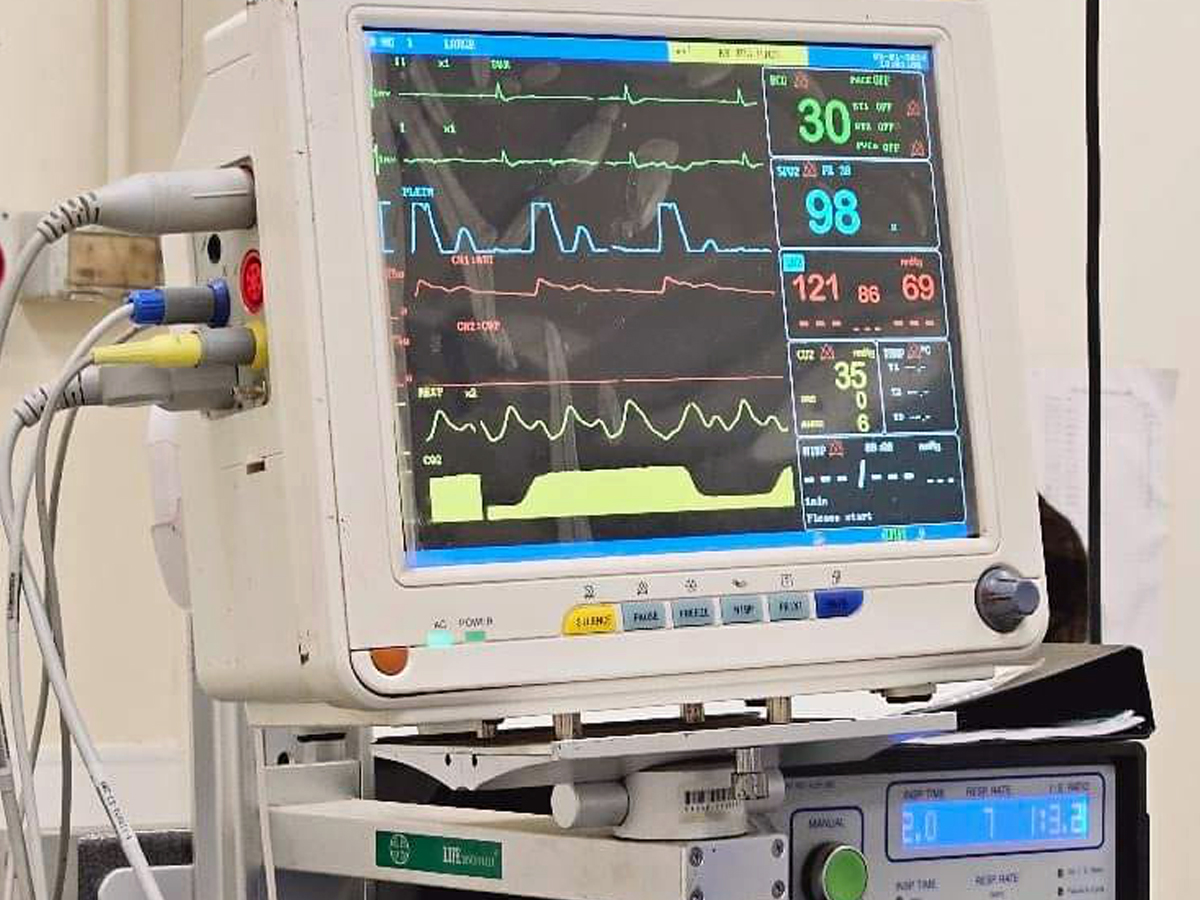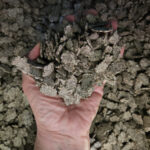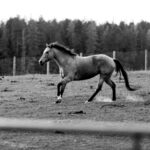
Introduction
Equine general anaesthesia is more fraught with danger of mortality and serious morbidity, than GA in small animal species (Johnston et al., 1995, 2002; Brodbelt et al., 2008; Hubbell, Muir III and Hopster, 2022) as well as in humans (Haller, Laroche and Clergue, 2011). Most recent literature reports mortality rates of approximately 1% overall (Dugdale and Taylor, 2016; Chiara Laurenza, Lèa Ansart, and Karine Portier, 2020). This makes general anaesthesia of the horse a major safety concern for equine veterinary clinicians and veterinary anaesthetists world-wide (Gozalo-Marcilla et al., 2021).
Registered veterinary nurses in equine practice (eRVN’s) typically do not play a large role in monitoring of general anaesthesia in theatre. Specialist veterinary anaesthetists routinely conduct and monitor the anaesthetic process, recording all findings in the patient anaesthetic chart. Intern vets are often also trained in this process. But what is the current role of eRVN’s in anaesthesia of the equine patient? Should eRVN’s play a larger role? And what are the arguments for and against this?
Current Role of eRVN’s in Anaesthesia
Typically, the role of the eRVN in equine anaesthesia is varied, but can often include any of the following:
- Taking the patient history from the owner
- Grooming the patient
- Carrying out a clinical examination prior to pre medication
- Weighing the patient
- Administration of pre-medication
- Applying a tail bandage
- Rinsing out the patient’s mouth
- Placing of an intravenous catheter
- Assisting with safe knockdown
- Assisting with the placement of hobbles on the patient and the safe transportation to the theatre, via a winch system
- Assisting with the safe, careful and correct positioning of the patient for surgery
- Placement of a urinary catheter
- Clipping of the surgical site
- Hoovering up clipped hair
- Scrubbing of the surgical site
- Scrubbed in nurse duties
- Circulating nurse duties
- Once surgery is complete, the safe transportation of the patient, via winch, to the recovery box
- Assisting with the safe placement of the patient in the recovery box
- Assisting in the monitoring of the patient in recovery and relaying all findings to the vet
- Once deemed safe, returning the patient to a stable which has been prepared and then the preparation of intravenous fluids where required
Should the eRVN Play a Larger Role in Anaesthesia?
All eRVN’s have been fully trained in anaesthesia, through their Day 1 competencies and those who are suitably experienced and considered competent, as per the Code of Professional Conduct for Veterinary Nurses (VCI, 2022), could be allowed to play a greater role. They have excellent knowledge of the risks involved in anaesthesia, as well as the measures that need to be taken in order to mitigate them. They are able to recognise and act, if and when an anaesthetic crisis occurs. This makes them ideal candidates to work closely with and provide support to the anaesthetist, in ensuring excellent standards of care and safety for patients. The idea of an increased role in equine anaesthesia for an eRVN is fraught with many arguments for and against, as well as opportunities and barriers, or threats perceived, to any advances to make this happen.
Legal and Ethical Considerations
The practice of veterinary nursing in Ireland is governed and regulated by the Veterinary Council of Ireland, whose legislation is enabled under The Veterinary Practice Act 2005 and The Animal Welfare Act 2013. The VCI’s Code of Professional Conduct for Veterinary Nurses (VCI, 2022) provides binding standards of professional practice, that all registered veterinary nurses must follow, for the good of patients, clients, colleagues, themselves and the general public. In the code, under the role and scope of practice for veterinary nurses, the guidelines are provided for competencies that are permitted to be carried out by veterinary nurses, Under these, a veterinary nurse may assist in the provision of anaesthetics to animals. He/she may, under these guidelines, carry out the induction of anaesthesia, while assisting and in the presence of a veterinary practitioner. However the specific drugs used and the quantities to be administered by the veterinary nurse, must be directed by the veterinary practitioner. The maintenance and the monitoring of anaesthesia is the responsibility of the veterinary practitioner, though a veterinary nurse can maintain anaesthesia, while assisting and in the presence of a veterinary practitioner. Also, the monitoring of a patient during the recovery, is the responsibility of the veterinary practitioner, though it can be carried out by a veterinary nurse, under the direction of the delegating veterinary practitioner. When considering an increased role for eRVN’s these rules must be seriously considered and adhered to at all times. It is clear from the legislation that the eRVN cannot carry out an autonomous role in equine anaesthesia.
The Argument for an Increased Role
The veterinary nursing profession in Ireland and the UK faces many challenges. There is a shortage of veterinary nurses and retention within the industry is a major problem. In the UK, VN Futures Interim Report 2021 (VNadmin, 2021) describes the many challenges and according to this report, 25% of veterinary nurses plan to leave the profession in the near future. Among the reasons cited are a lack of career progression, a feeling of being unrewarded and undervalued, skillset not being fully utilised and a feeling of not being delegated to. These challenges are particularly felt in equine veterinary nursing. Change is imperative and these issues need to be addressed, in order to provide a more supportive, healthier, happier and more fulfilled role for our valuable RVN workforce, thus enhancing retention rates.
An increased role in equine anaesthesia for eRVN’s would be one way to enhance the role and any clinical abnormalities can be quickly detected, with an extra pair of eyes, ensuring that the patient’s physiological function and depth of anaesthesia are adequate for these animals (Dagnall, Khenissi and Love, 2022), who provide such a high risk for GA. It is within the eRVN’s job description to assist in anaesthesia and with all monitoring techniques, as RVN’s routinely do in small animal anaesthesia.
They can be involved in preparing and setting up of monitoring equipment, manually recording vital signs and inserting arterial lines. Although all drugs used must be prescribed by a veterinary practitioner, their administration can be delegated to an eRVN (VCI, 2022).
They can also play a bigger role in the post-operative recovery process, both assisted and unassisted, where 23.3% of deaths are as a result of fractures (Johnston, 2005), with many attempting to stand prematurely, while still very ataxic. An extra set of human senses would lead to enhanced observation of drug clinical effects and side-effects, during this critical period.
The eRVN’s input in the entire process would then result in reducing the risk for our equine patients and in improved welfare, as a consequence. It would also lead to happier and fulfilled nurses, who feel more valued in their roles.
Challenges
Due to the high mortality rates in equine anaesthesia, as well as the high monetary value of many of these patients, the idea of an enhanced role for eRVN’s sometimes meets resistance from veterinary colleagues. There is also a fear of change associated with the idea, as change brings uncertainty. A fear of the unknown and a fear of failure, or the idea that “if it’s not broke, why fix it!”.
Conclusion
Regular and continuous reviews of our practices in equine veterinary hospitals are vital for good clinical governance, as well as for a happy workforce. Team members should come together and co-operate effectively, voicing any concerns they may have, then implementing changes and improvements in practice where necessary. An increased role for eRVN’s, while practicing in accordance with the Veterinary Council of Ireland’s Code of Professional Conduct for Veterinary Nurses (VCI, 2022) as well as The Veterinary Practice Act 2005 and The Animal Health and Welfare Act 2013, is something that definitely needs to be considered.
References
Brodbelt, D.C. et al. (2008) ‘The risk of death: the confidential enquiry into perioperative small animal fatalities’, Veterinary anaesthesia and analgesia, 35(5), pp. 365–373.
Chiara Laurenza, Lèa Ansart, and Karine Portier (2020) ‘Risk Factors of Anesthesia-Related Mortality and Morbidity in One Equine Hospital: A Retrospective Study on 1,161 Cases Undergoing Elective or Emergency Surgeries’, Frontiers in Veterinary Science, 6.
Dagnall, C., Khenissi, L. and Love, E. (2022) ‘Monitoring techniques for equine anaesthesia’, Equine Veterinary Education, 34(12), pp. 644–659.
Dugdale, A.H. and Taylor, P.M. (2016) ‘Equine anaesthesia-associated mortality: where are we now?’, Veterinary Anaesthesia and Analgesia, 43(3), pp. 242-242–243.
Gozalo-Marcilla, M. et al. (2021) ‘Data collection for the fourth multicentre Confidential Enquiry into Perioperative Equine Fatalities (CEPEF4) study: new technology and preliminary results’, Animals, 11(9), p. 2549.
Haller, G., Laroche, T. and Clergue, F. (2011) ‘Morbidity in anaesthesia: today and tomorrow’, Best practice & research Clinical anaesthesiology, 25(2), pp. 123–132.
Hubbell, J., Muir III, W. and Hopster, K. (2022) ‘Rethinking equine anaesthetic risk: Development of a novel Combined Horse Anaesthetic Risk Identification and Optimisation tool (CHARIOT)’, Equine Veterinary Education, 34(3), pp. 134–140.
Johnston, G. et al. (1995) ‘Confidential enquiry of perioperative equine fatalities (CEPEF‐1): preliminary results’, Equine Veterinary Journal, 27(3), pp. 193–200.
Johnston, G. et al. (2002) ‘The confidential enquiry into perioperative equine fatalities (CEPEF): mortality results of Phases 1 and 2’, Veterinary Anaesthesia and Analgesia, 29(4), pp. 159–170.
Johnston, G. M. (2005) ‘Findings from the CEPEF epidemiological studies into equine perioperative complications.’, Equine Veterinary Education, 15(S7), pp. 64-64–68.
‘VCI_Code_of_Professional_Conduct_for_Veterinary_Nurses_2021-(WEB)_1.pdf’ (2022). Veterinary Council of Ireland. (Accessed: 13 October 2023).
VNadmin (2021) ‘VN Futures Interim Report 2021’, VN Futures. (Accessed: 10 February 2024).,ould be allowed to play a greater role


